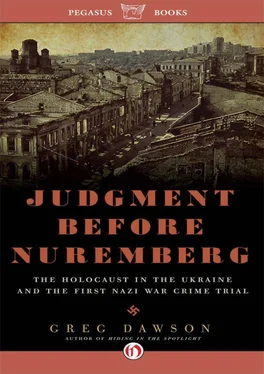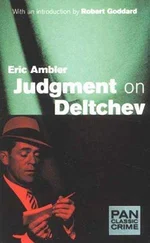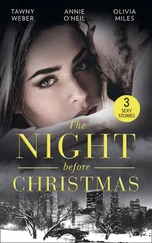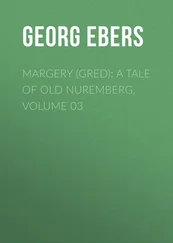Of course, she knows—for very personal reasons—about Righteous Gentiles. What she doesn’t know—and has a hard time accepting—is that most other people don’t know. We sometimes appear together at schools or bookstores to talk about Hiding in the Spotlight , and in telling her story of escape and survival she invariably refers to “my Righteous.” I can tell from the sea of glazed eyes that her shorthand reference did not register with the audience.
“You know, mom,” I say afterward as gently as possible, “when you say ‘my righteous,’ they don’t know what you’re talking about. You need to spell it out.”
A small percentage will blink in recognition at “Righteous Gentiles,” but I always offer the room a nutshell definition: the mantle of Righteous Gentile is the highest honor the state of Israel can bestow on a non-Jew, given to those who risked their lives to shelter Jews during the Holocaust. The formal name of the honor awarded by the Yad Vashem Holocaust memorial in Israel is “The Righteous Among Nations.” Some 23,000 individuals from 44 countries have been so honored. In the U.S., the best-known Righteous is Schindler, the German industrialist who saved 1,200 Jews, but his name was impossible trivia, too, for most Americans before the Steven Spielberg movie.
I suspect that Schindler’s List did more to make Liam Neeson a star than it did to raise the average Academy Awards show viewer’s awareness of Righteous Gentiles as a group, which is understandably dim. We are separated by an ocean—geographically and emotionally—from the Holocaust. Among 23,000+ Righteous, only three are Americans. Individual Americans were, literally, in no position to shelter Jews fleeing death marches, though we did have the opportunity to act righteously, at little risk, as a country—and ignominiously slammed the door. In May 1939, the U.S. government turned away the S.S. St. Louis, carrying nearly a thousand Jews from Europe in search of refuge from Hitler. The ship was forced to return to Germany, where many of its passengers died in the Holocaust. Because America lost its nerve or its conscience—or because there was anti-Semitism in high places in Washington—the journey of the St. Louis became known as The Voyage of the Damned.
Unlike the U.S., which observed from a safe distance, Ukraine was ground zero of the Holocaust. The mass extermination of Jews began there, creating the first need and opportunities for rescuers. Yad Vashem has named 2,272 Righteous in Ukraine, placing it fourth behind France, Netherlands, and Poland, which is first on the list with 6,195. No country has a greater need for the world to know of its Righteous Gentiles than does Ukraine, whose identity still bears the stigma of anti-Semitism and pogroms and collaboration with occupying Nazis by a significant subset of its population. It needs a homegrown Oskar Schindler to supplant the persistent image of Schutzmannschaften —Ukrainian police working for the Germans—dragging Jews through the streets and patrolling death marches.
Twenty-three thousand may sound like a lot, but it’s not—about one Righteous for every 260 exterminated Jews, based on six million dead. (The ratio of Schutzmannschaften to Righteous Gentiles in Ukraine is roughly 46 to 1.) The vetting process for admission to this august club is rigorous and protracted, as we learned in securing the honor for my mother’s Righteous—Evdokiya Bogancha and her husband Prokofiev—neighbors in Kharkov who hid her from the Nazis after she escaped the death march to Drobitsky Yar. Not just anyone can hold up their hand and claim they sheltered Jews. Verifiable documents and testimony are required. In May 2007, my mother submitted her testimony to an authorized representative of Yad Vashem in Atlanta, where she has lived for the past twenty-five years.
“I want to write about the wondrous family, Bogancha. Everyone knew of the German order to kill on the spot all rescuers of Jews. Yet, they put their own lives second when I knocked on their gate’s door early that morning of January 2, 1942. I had jumped out of the death march where I was but one of many walking in a long column of rows and rows of Jews who were without weapons and weakened by the cruelest treatment. We were surrounded by German guards with whips and Ukrainian guards with rifles.
“When my father started speaking Ukrainian to the Ukrainian guard, he said: ‘Look at me, I am not a Jew. I am going because of my wife.’ My father continued: ‘Please let my little daughter go’—at the same time showing him his gold pocket watch, his lifetime possession. He was taking off his overcoat and placing it on my shoulders, leaving himself exposed to one of the coldest winters in the history of the country.
“I knew I had to dive out of the death procession. I turned my head looking past my mother and saw a large roll of barbed wire on the ground and two women standing there just watching the column. I then jumped out of the column and the two of them became three of us. I stood there tied to the disappearing vision of the column… not really knowing where to go. My feet did the thinking for me. They turned me in the opposite direction, toward Kharkov, my city that I loved, 20 kilometers ahead.
“On my way back, I was allowed once again to spend a night in a house of total strangers. They had put me up several days before when I had sneaked out of the ghetto to go back to my street—Katsarskaya—to try to find food for the family. They could guess my origin because they saw thousands of people passing their home in the last two weeks. But they didn’t ask questions. They let me spend the night in their little house so I would not freeze to death.
“I got up early and reached Katsarskaya Street. First, I went to see my classmate, Leeda, and her mother. They let me in and explained that they couldn’t hide or keep me. They couldn’t have been any nicer. I truly understood their position. Next I went to the home of my closest school mate and her mother. This was Svetlana Paganovich. I knocked on their door. They opened it and were horrified to see me, saying, ‘Go away, you musn’t come here’ and slammed the door.
“My last chance was the home of my very favorite boy classmate, Nicolai. I liked him so much that I was afraid to speak to him. We lived on the same side of the same block, but in all the years I never saw inside his gate. When I finally dared to knock on the gate… it was opened right away. I saw the most kindly woman imaginable, Nicolai’s mother, Evdokiya Nicolaevna Bogancha. I introduced myself because her family and mine had never met. She took my arm and pulled me in, locking the gate. Nicolai’s father, Prokofiev Philipovich, was just as welcoming. This welcome would have been pleasing to a queen, but for a persecuted Jewish child who had just lost her family it was heavenly.
“The miracle continued. Two days later a man came to tell the Boganchas that Frina had escaped too and was in another home. Without hesitation, the Boganchas told him to let Frina join me. His appearance meant that people on the street knew that we had escaped, that we were hiding and who was hiding us. No one informed on us and we remained there for one week.
“After a few days Mr. and Mrs. Bogancha started talking to us about the necessity of leaving Kharkov… and introduced the thought that we would be two different people than we were before the war. They told us to look for an orphanage where we could hide until the war was over. We changed our names and those of our parents, and the story of how we became orphans.
“The Boganchas arranged with some farmer friends to take us in a cart to the closest train stop. We would then follow the railroad tracks for 25 kilometers to Lubotin where we found someone who let us spend the night. The next morning we walked to the train station where we found an empty boxcar which had some straw on the floor. After a few hours the train started moving to Poltava where we spent the night in the station. Then began our perilous 4-year journey until the end of the war. But that is a very long story for another time.”
Читать дальше












